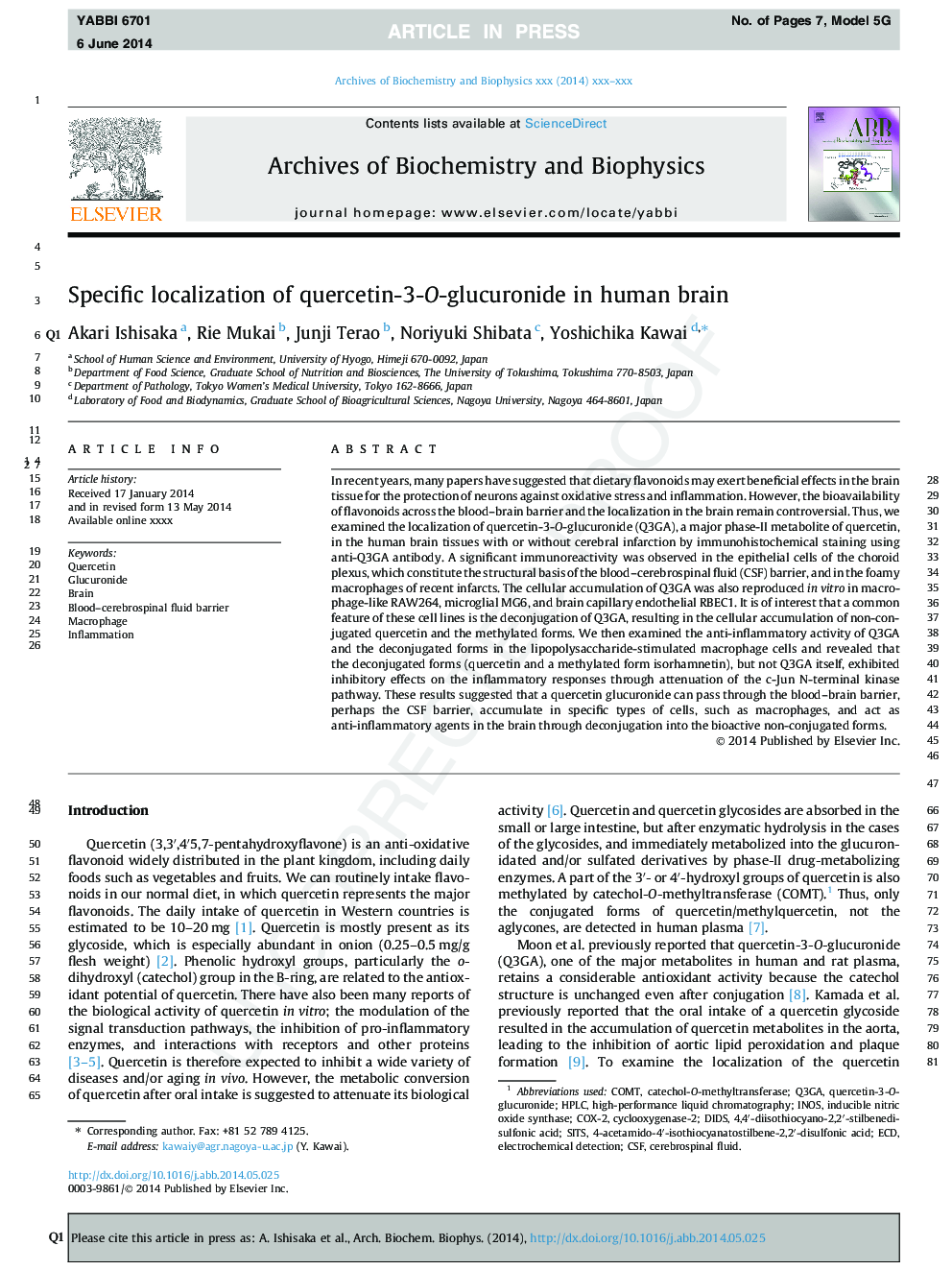| کد مقاله | کد نشریه | سال انتشار | مقاله انگلیسی | نسخه تمام متن |
|---|---|---|---|---|
| 8290177 | 1536345 | 2014 | 7 صفحه PDF | دانلود رایگان |
عنوان انگلیسی مقاله ISI
Specific localization of quercetin-3-O-glucuronide in human brain
دانلود مقاله + سفارش ترجمه
دانلود مقاله ISI انگلیسی
رایگان برای ایرانیان
کلمات کلیدی
موضوعات مرتبط
علوم زیستی و بیوفناوری
بیوشیمی، ژنتیک و زیست شناسی مولکولی
زیست شیمی
پیش نمایش صفحه اول مقاله

چکیده انگلیسی
In recent years, many papers have suggested that dietary flavonoids may exert beneficial effects in the brain tissue for the protection of neurons against oxidative stress and inflammation. However, the bioavailability of flavonoids across the blood-brain barrier and the localization in the brain remain controversial. Thus, we examined the localization of quercetin-3-O-glucuronide (Q3GA), a major phase-II metabolite of quercetin, in the human brain tissues with or without cerebral infarction by immunohistochemical staining using anti-Q3GA antibody. A significant immunoreactivity was observed in the epithelial cells of the choroid plexus, which constitute the structural basis of the blood-cerebrospinal fluid (CSF) barrier, and in the foamy macrophages of recent infarcts. The cellular accumulation of Q3GA was also reproduced in vitro in macrophage-like RAW264, microglial MG6, and brain capillary endothelial RBEC1. It is of interest that a common feature of these cell lines is the deconjugation of Q3GA, resulting in the cellular accumulation of non-conjugated quercetin and the methylated forms. We then examined the anti-inflammatory activity of Q3GA and the deconjugated forms in the lipopolysaccharide-stimulated macrophage cells and revealed that the deconjugated forms (quercetin and a methylated form isorhamnetin), but not Q3GA itself, exhibited inhibitory effects on the inflammatory responses through attenuation of the c-Jun N-terminal kinase pathway. These results suggested that a quercetin glucuronide can pass through the blood-brain barrier, perhaps the CSF barrier, accumulate in specific types of cells, such as macrophages, and act as anti-inflammatory agents in the brain through deconjugation into the bioactive non-conjugated forms.
ناشر
Database: Elsevier - ScienceDirect (ساینس دایرکت)
Journal: Archives of Biochemistry and Biophysics - Volume 557, 1 September 2014, Pages 11-17
Journal: Archives of Biochemistry and Biophysics - Volume 557, 1 September 2014, Pages 11-17
نویسندگان
Akari Ishisaka, Rie Mukai, Junji Terao, Noriyuki Shibata, Yoshichika Kawai,